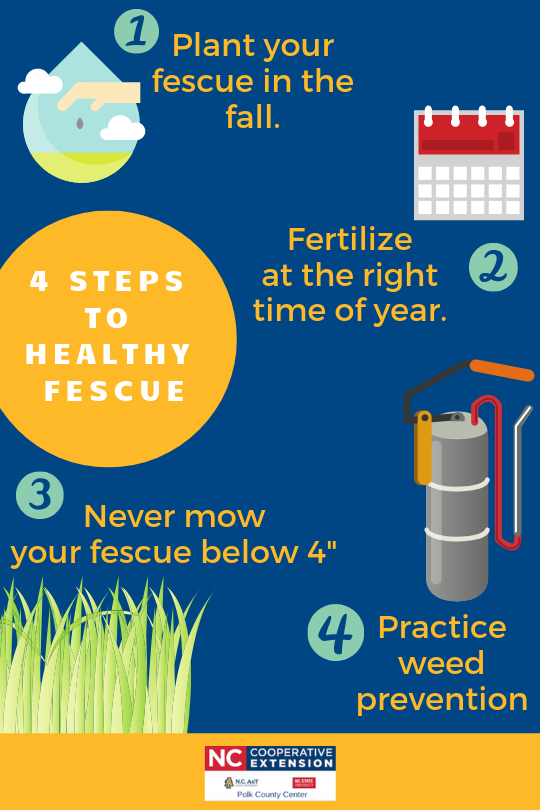Four Steps That Will Help Your Fescue Thrive
go.ncsu.edu/readext?591100
en Español / em Português
El inglés es el idioma de control de esta página. En la medida en que haya algún conflicto entre la traducción al inglés y la traducción, el inglés prevalece.
Al hacer clic en el enlace de traducción se activa un servicio de traducción gratuito para convertir la página al español. Al igual que con cualquier traducción por Internet, la conversión no es sensible al contexto y puede que no traduzca el texto en su significado original. NC State Extension no garantiza la exactitud del texto traducido. Por favor, tenga en cuenta que algunas aplicaciones y/o servicios pueden no funcionar como se espera cuando se traducen.
Português
Inglês é o idioma de controle desta página. Na medida que haja algum conflito entre o texto original em Inglês e a tradução, o Inglês prevalece.
Ao clicar no link de tradução, um serviço gratuito de tradução será ativado para converter a página para o Português. Como em qualquer tradução pela internet, a conversão não é sensivel ao contexto e pode não ocorrer a tradução para o significado orginal. O serviço de Extensão da Carolina do Norte (NC State Extension) não garante a exatidão do texto traduzido. Por favor, observe que algumas funções ou serviços podem não funcionar como esperado após a tradução.
English
English is the controlling language of this page. To the extent there is any conflict between the English text and the translation, English controls.
Clicking on the translation link activates a free translation service to convert the page to Spanish. As with any Internet translation, the conversion is not context-sensitive and may not translate the text to its original meaning. NC State Extension does not guarantee the accuracy of the translated text. Please note that some applications and/or services may not function as expected when translated.
Collapse ▲ Most farms in Polk County have Kentucky 31 Fescue as their primary grass. This is a great grass for your animals–even with its endophyte issues. If you do a lot of breeding you may want to consider other grasses or keep your animals off the grass while in gestation, but overall it’s the best grass for our area. When managed properly, it is tough and can resist the stresses of the Polk County climate–providing you with persistent forage.
Most farms in Polk County have Kentucky 31 Fescue as their primary grass. This is a great grass for your animals–even with its endophyte issues. If you do a lot of breeding you may want to consider other grasses or keep your animals off the grass while in gestation, but overall it’s the best grass for our area. When managed properly, it is tough and can resist the stresses of the Polk County climate–providing you with persistent forage.
The question is how to manage fescue so that it will thrive in your field for many years. The first step is to plant in the fall. Cool season grasses grow best during times of cooler soil and air temperatures. The next important tip is never to mow or graze your K31 fescue below 4 inches tall. For the grass to mature and maintain deep roots, it must be allowed to grow tall. This will require effort on your part; moving your animals when an area is getting low, for instance, and resisting the temptation to mow your pastures like a golf course.
The next step is to apply fertilizers at the proper time. For our area, this means in late February and again in mid-September. If you choose to only fertilize once per year, choose the fall application. Also, conduct a soil test to see if your pH level indicates that you need to apply lime. If you don’t plan on soil testing, apply 10 pounds of 10-10-10 fertilizer per 1000 square feet of lawn space or 6 pounds of 17-17-17. This will get your lawn off to a good start. Note: anytime you apply a fertilizer with phosphorus in it, you should first aerate your yard so that the nutrient gets into the ground. The last task toward a beautiful fescue lawn or pasture will be to spray for unwanted or toxic broadleaf weeds. While there are many sprays available, most people in our area choose to utilize Crossbow or Grazonnext.




